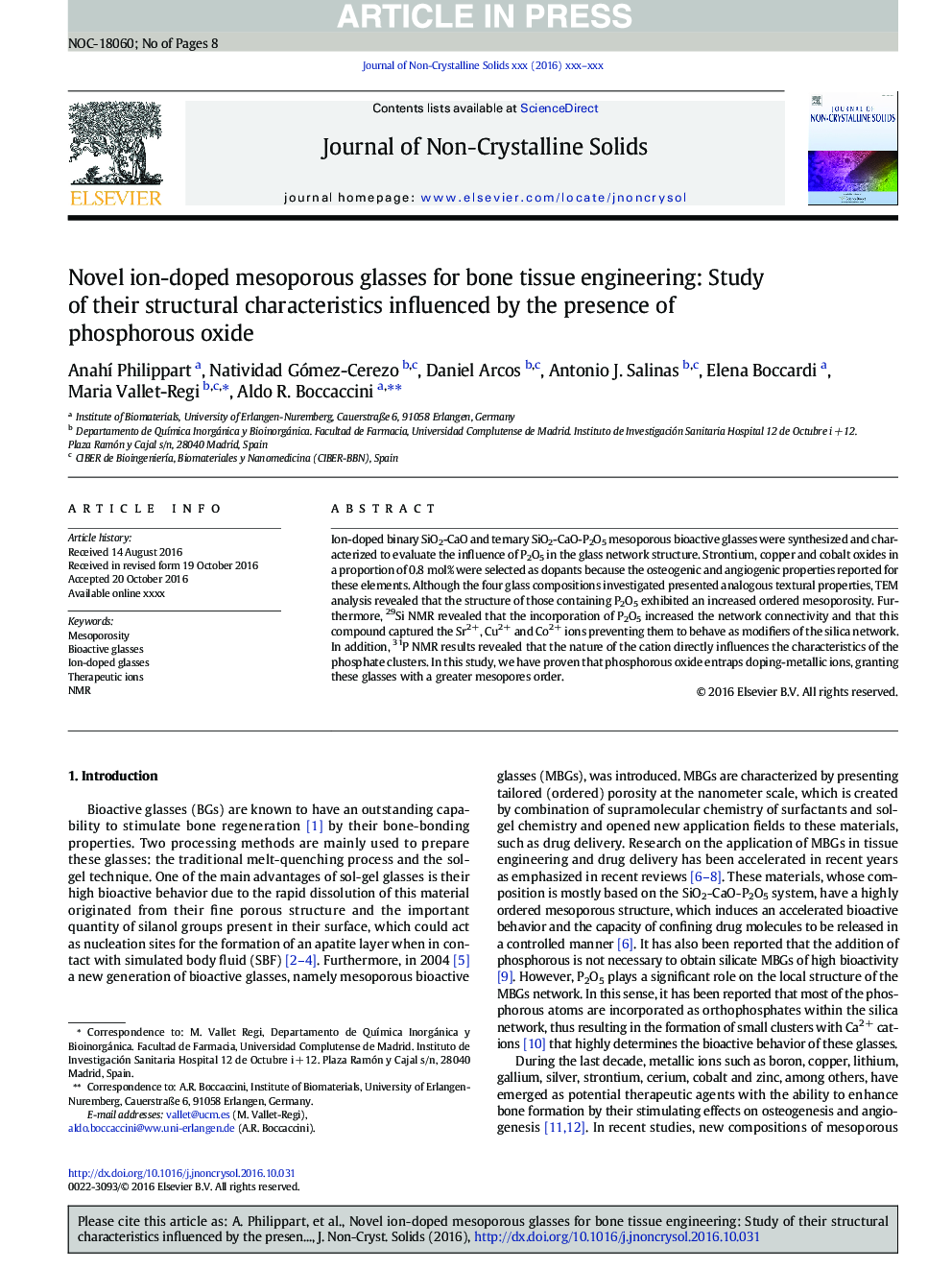| Article ID | Journal | Published Year | Pages | File Type |
|---|---|---|---|---|
| 5441493 | Journal of Non-Crystalline Solids | 2017 | 8 Pages |
Abstract
Ion-doped binary SiO2-CaO and ternary SiO2-CaO-P2O5 mesoporous bioactive glasses were synthesized and characterized to evaluate the influence of P2O5 in the glass network structure. Strontium, copper and cobalt oxides in a proportion of 0.8Â mol% were selected as dopants because the osteogenic and angiogenic properties reported for these elements. Although the four glass compositions investigated presented analogous textural properties, TEM analysis revealed that the structure of those containing P2O5 exhibited an increased ordered mesoporosity. Furthermore, 29Si NMR revealed that the incorporation of P2O5 increased the network connectivity and that this compound captured the Sr2Â +, Cu2Â + and Co2Â + ions preventing them to behave as modifiers of the silica network. In addition, 31P NMR results revealed that the nature of the cation directly influences the characteristics of the phosphate clusters. In this study, we have proven that phosphorous oxide entraps doping-metallic ions, granting these glasses with a greater mesopores order.
Related Topics
Physical Sciences and Engineering
Materials Science
Ceramics and Composites
Authors
Anahà Philippart, Natividad Gómez-Cerezo, Daniel Arcos, Antonio J. Salinas, Elena Boccardi, Maria Vallet-Regi, Aldo R. Boccaccini,
